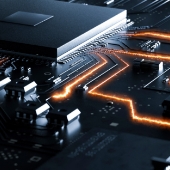 Conserving energy while using your PC daily can be quite challenging. A typical desktop setup, including loudspeakers and a printer, can consume nearly 600 kWh annually if used for eight hours a day. The good news is that you can significantly reduce this consumption by adopting a few practical tips.
Conserving energy while using your PC daily can be quite challenging. A typical desktop setup, including loudspeakers and a printer, can consume nearly 600 kWh annually if used for eight hours a day. The good news is that you can significantly reduce this consumption by adopting a few practical tips.
Adjust your monitor’s brightness
Most modern monitors come with built-in sensors that automatically adjust screen brightness based on the ambient light in the room. Additionally, you can manually reduce the brightness of your monitor to cut down on power consumption. Lowering the brightness not only saves energy but also reduces eye strain.
Turn off and unplug when not in use
Leaving your computer on all day, even when not in use, can waste a significant amount of energy. If you’re stepping away for an extended period, it’s best to shut down and unplug your computer. Even when switched off, a plugged-in computer can draw standby power. For short breaks, consider turning off your monitor or putting your laptop into sleep or hibernation mode to conserve energy.
Enable power-saving settings
Your PC most likely has built-in power-saving features — use them. Set your computer to enter sleep or hibernation mode after a period of inactivity. These settings significantly reduce energy use by cutting power to nonessential components without fully shutting down your system.
Use a smart power strip
Smart power strips can help eliminate standby power consumption. These devices automatically cut off power to peripherals like printers and speakers when your computer is turned off or in sleep mode, preventing unnecessary energy use.
Choose a laptop over a desktop
Laptops are inherently designed to be more energy-efficient than desktop computers. Their components are optimized for minimal power consumption to prolong battery life, making laptops a greener choice for your computing needs.
Unplug your laptop once fully charged
It’s easy to forget about your laptop while it’s charging, but leaving it plugged in for extended periods can lead to overcharging, which degrades the battery. Additionally, a plugged-in charger consumes power even when it’s not actively charging your laptop. To conserve energy and maintain battery health, make sure to unplug your charger once your laptop is fully charged.
Detach external devices when not in use
External devices such as printers, scanners, and webcams continue to draw power even when idle, contributing to unnecessary energy consumption. Make it a habit to disconnect any peripherals that are not in use. The benefits of this simple step are twofold: it reduces energy usage and extends the lifespan of your devices by preventing wear from constant power flow. Moreover, unplugging external devices can declutter your workspace and streamline your computer’s performance by reducing the load on its power supply.
Upgrade to energy-efficient hardware
Consider upgrading to energy-efficient components, such as SSDs instead of traditional hard drives, and using power supplies with high-efficiency ratings. Newer hardware is often designed to be more energy-efficient, which can lead to significant energy savings over time.
By implementing these tips, you can lower your electricity bills and make more informed hardware choices. If you need assistance selecting the best hardware for your company’s needs, don’t hesitate to reach out.



